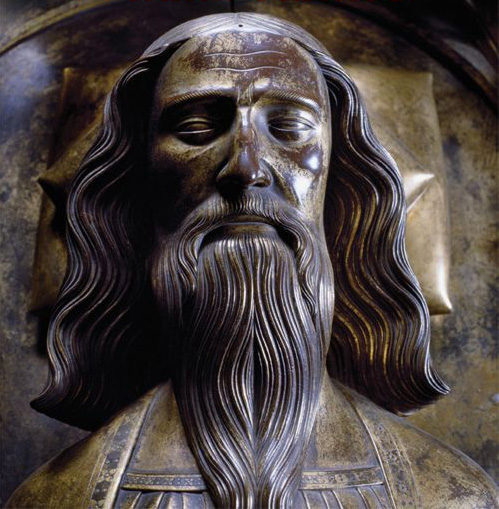
Sir John Wingfield And The Black Prince
By Tony Wingfield
Sir John, Katherine’s father and the last Lord of Wingfield Manor, was undoubtedly a soldier of some fame, and it was fortunate for him that the monarch of his day was Edward III and not the unadventurous passivist Edward II.
Sir John was apparently a friend of Edward III who appointed him High Steward to his son, the Prince of Wales, later to be known as the Black Prince. Some sources say that he was Chief-of-Staff during the Prince’s Aquitaine Campaign and that he personally captured Jean, the Valois King of France. Neither of the statements are correct, in my opinion, as will be seen later.
In 1346 Edward III launched a raid on the north of France which some historians regard as only a tilt or joust at Philip VI in an effort to test his military strength. It may also have been combined with a desire to loot the rich land of Normandy. Others contend the object was to capture Paris and the throne of all France.
Be that as it may Edward, in personal command sailed from the Solent and Spithead on the 11th July of that year with a force of some 20,000 fighting men and 5,000 horses. They landed in St Vaast around the northeast corner of the Cherbourg peninsula virtually unopposed, and not far from “the beaches” of the D Day in 1944.
The troops believed that they were heading for Bordeaux and the Acquitaine, but whether that was only a cover-plan to obtain surprise is not certain. It is recorded, however, that a favorable wind added to the advice of Godefoi d’Harcourt made the King change his mind while at sea and sail for Normandy.

After spending a few days looting around Cherbourg and collecting more horses, the King headed south for Carentan and then for St Lo again reminiscent of the American action in 1944 with cries of, “all roads lead to St Lo.”
The King then turned eastwards through Caen to Elboeuf on the Seine, looting the villages of Normandy all the way. At Elboeuf he turned south for Paris; but on reaching Lisieux he considered that the feudal forces being brought to the aid of Philip VI were too strong to risk an engagement. He therefore crossed the Seine and turned northeast for the coast with the probable intention of re-embarking for England carrying his trail of loot with him. However, the forces of Philip followed him in hard pursuit and the famous battle of Crecy ensued.
King Edward had taken his 15 year old son, the Prince of Wales, with him on this expedition, be it a raid or campaign. As he had appointed Sir John Wingfield the prince’s High Steward and Councillor it can be presumed that he was there with the boy; for he was certainly with the prince ten years later at Poitier.
The King had now appointed his young son as nominal commander of the right wing of his army resting on the village of Crecy during the battle which arose.
It was the right wing which received the first attack by the French during which the young prince was unhorsed. Someone, presumably Sir John Wingfield, sent a message to the King to the effect that his son was in peril; to which the King gave his famous reply, “let him win his spurs.” Reinforcements were, however, sent and the prince made safe.
The English defensive stand at Crecy was a classic win for troops who were a professional and disciplined force equipped with a newly improved weapon — the ‘long bow’ able to penetrate body armour at 250 yards — and opposed by a force though superior in numbers, was described as a polyglot army of feudal gatherings and doubtful mercenaries (the Genoese) cross-bow archers.
Edward waited a further day on the battlefield to finish off the wounded and loot the dead. He then turned for the coast and Calais to which he gave siege, while Philip’s forces withdrew this time offering no serious pursuit.
The siege of Calais lasted for eleven months, and then the town surrendered to become English property for the next two hundred years during which time further members of the Wingfield family became deeply involved with its guardianship as will be told in later chapters.
Also, in the meantime, the problem of the Plantagenet claim to the French Monarchy had not been resolved, and it was ten years later that another attempt was made in which Sir John Wingfield played a certain and more prominent role. In 1355 a force commanded by the Black Prince, as he was now known at the age of twenty five years, landed at Bordeaux in September where the French nobles in Gascony were in full support of the Plantagenet King — his father.
The object of this expedition was probably twofold: to strengthen the allegiance of the people of Guienne, the north of the Garonne, to Edward III and, at the same time, draw the feudal forces of the Valois King Jean, successor to his late father, Philip VI, to the south and away from Plantagenet activity in Normandy and Artois. However the Black Prince’s first move was in another direction.
In the autumn of 1355 he struck southeastward into Armagnac and passed through Toulouse and Carcassone as far as Narbonne, on the coast, possibly through territory which was held feudally by King Jean.
The raid lasted for two months and five hundred towns and villages in the Province of Languedoc were utterly destroyed. Sir John Wingfield, who definitely took part in this operation, wrote to his friend the Bishop of Winchester saying, “Be assured of this, that since the war with the King of France began, there has nowhere else been wrought such havoc as during this raid. For the lands and towns which we have laid waste, brought in the French King each year, for the prosecution of the war, more revenue than was furnished by half his kingdom!’
On the return of the Black Prince to Bordeaux his captains were not allowed to rest and enjoy their spoils, but were sent northwards into Guienne to prepare for the next task. The Prince himself set up his headquarters at Perigueux in the Dordogne in the early months of 1356 with the intention of probing further north into the valley of the Loire.
This was the start of the campaign of Poitiers and, just as King Edward’s Normandy raid of 1346 had drawn French pressure away from his forces in Gascony, this maneuver of the Black Prince was to draw King Jean’s levies southwards away from King Edward’s northern force now under command of the Prince’s younger brother, John of Gaunt, Duke of Lancaster.



